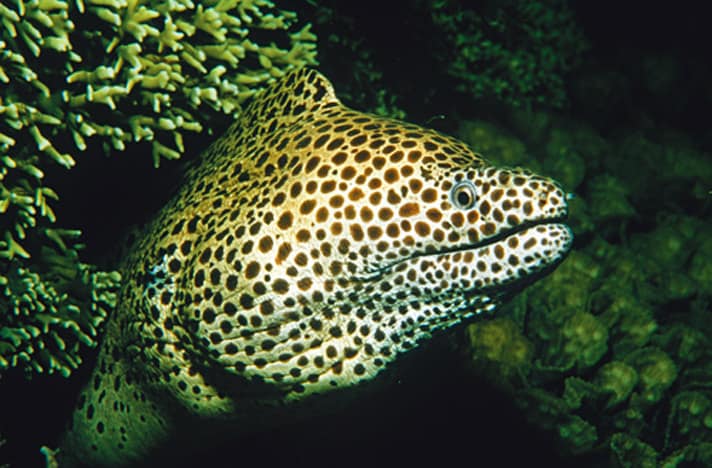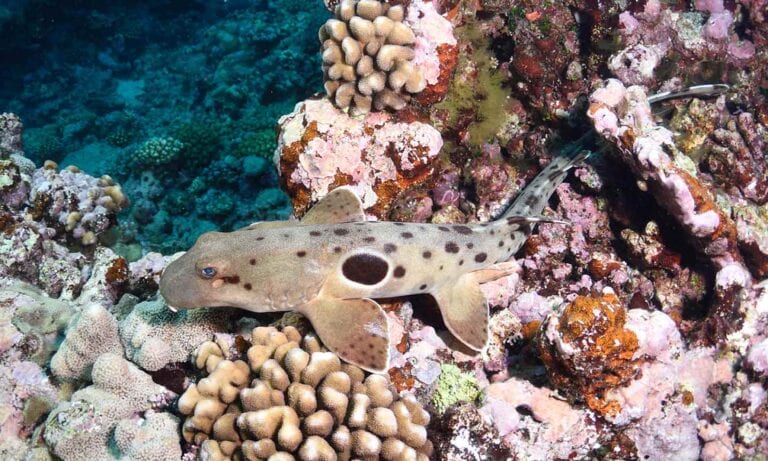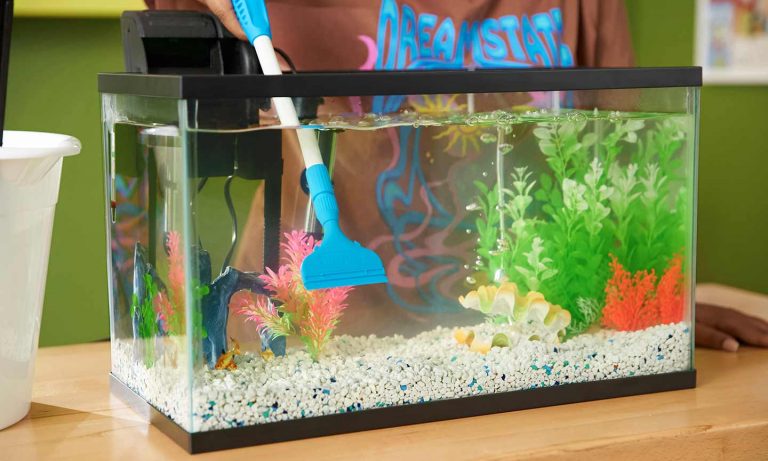Fish are found in freshwater, saltwater and all salinities in between. The moray eel is an excellent example of a fish that is found in many levels of salinity in the wild. It also comes in sizes from dwarves that stay around 12 inches to monsters that can grow to 16 feet and are as big around as a man’s thigh.
I want to look at Gymnothorax tile, a fish that is usually sold as the “freshwater moray eel.” While the common name of “moray eel” is correctly applied to this fish, it shouldn’t be called “freshwater.” Therefore, I am going to refer to it by its scientific name.
Gymnothorax tile is found in nature over a wide distribution in the estuaries and tidal flats of the Indo-Pacific, especially in the Philippines and Indonesia. It is typically collected from brackish mangrove forests and where rivers run into the sea. It is also sometimes found in totally freshwater habitats and sometimes in completely salt environments (ideally, between 1.022 to 1.024).
Fish that traverse from fresh to salt usually do this for a number of reasons. Like salmon, they may spend much of their lifetime in saltwater but come into freshwater to breed or vice versa. They may simply follow their food sources. Another explanation for their movements is that they are ridding themselves of parasites that can’t survive the change in salinity. Whatever the reasons, calling this fish a “freshwater” moray eel is a misnomer — it does not spend much time in freshwater and will not thrive for long in a 100-percent freshwater tank.
Description
Gymnothorax tile has the typical eel shape, a large mouth armed with a lot of sharp teeth, and a body that is long, cylindrical and smooth. These fish grow to around 24 inches in length, at which time their bodies will be about 2 inches in diameter. Juveniles are a yellow-brown color with yellow dots over the entire body. As the fish matures, the dots disappear, and adult Gymnothorax tile are a solid dull brown-yellow color. All Gymnothorax tile that are for sale in your local fish store come from the wild, as I know of no records of anyone breeding this fish. Their behavior is that of a typical moray eel — they spend most of their time hiding in caves with only their heads protruding, and they placidly watch the world go by. Because they are nocturnal fish, they will be most active when the lights go out in their tank. To view them at night, you can set up a red light or the blue moon-lights that are popular nowadays; most nocturnal fish are not bothered by these colors of light.
Care and Feeding
Taking good care of Gymnothorax tile is really pretty simple. First and foremost, they are not freshwater fish. Gymno-thorax tile come from brackish waters, and though they may venture into both freshwater and saltwater conditions at times, they require a brackish tank long term. Use a good-quality marine salt to make the water brackish (1.010 SG). When you purchase your Gymnothorax tile, ask the local fish store (LFS) to take a reading of the fish tank’s salinity and try to match that to your tank at home. Of course, if your LFS is keeping them at a fresh-water SG, you’ll want to introduce them at that SG at home and gradually up it until it is at a brackish SG. Also, before purchasing one, ask the store to feed the fish, so you can make sure it is eating well.
Keep juveniles in at least 30 gallons; adults can be kept in a 75-gallon tank or larger. Keep the temperature at 78 degrees Fahrenheit; hardness should be commensurate with the salinity. To maintain the alkalinity of the water, it is a good idea to use some form of marine substrate. Other than opening the tank for feeding, keep the tank completely covered the rest of the time, and make sure there are not any small spaces from which the eel could escape. These fish need to have a choice of hiding places, as they will usually adopt a favorite, but they also like to move around between hidey-holes.
The easiest way to provide these shelters is simply to use pieces of PVC pipe of varying diameters, from 2 inches all the way up to 6 inches, depending on the size of the fish. Pieces of base rock can be used to make the caves look more natural. Use pieces of PVC piping for the cave itself, as these fish love to dig and rearrange things, and if you rely on piles of rock for them to hide in, it is possible that they may rearrange things to bring the entire rock pile down on their heads. With PVC as the caves, and with base rock piled on and around it, a natural look can be achieved without the risk of a cave-in. Gymnothorax tile is easily stressed, and having a few hiding places to choose from will greatly reduce any stress on this fish.
Feeding
Feeding Gymnothorax tile is not a problem, though they may take a little while to become acclimated to their new surroundings when you bring them home from the local fish store. There is really no need to provide Gymnothorax tile with live food, and they should never be fed feeder goldfish; however, any meaty marine flesh will do just fine for Gymnothorax tile. To start out, it is often best to dangle a piece of shrimp or clam in front of the moray on a feeding stick or loosely tied to the end of a piece of thread.
These fish quickly acclimate to the feeding routine, and they often become tame enough that they will come up out of the water to receive their daily fish food. Be careful of this, as they do have quite a set of teeth, and while not really venomous, the fluid around their mouths is said to be irritating if they do bite you. These fish may need to be fed at night to start with, but they will soon associate their keepers with food, so your G. tile will come out to feed whenever you show up. They do not need to be fed every day, but they do best with three or four feedings per week.
Tankmates
Gymnothorax tile is most often kept as a single specimen in its own aquarium, but it is possible to keep it with other fish. The limitation is that any fish in their tank should be large enough so that the moray will not see them as lunch. A good friend of mine recently told me that she had just gotten a Gymnothorax tile that was about 8 inches long — a typical size for specimens sold in shops. She put the moray into an African cichlid tank that was somewhat brackish with a high pH. The next day, she could not find her brichardi anymore, but she did see a very fat G. tile. (It is always best to try and keep a fish with other species that are common to its home environment. — Eds.)
Other Similar Species
Gymnothorax tile is the species called “freshwater moray eel” found most often in your local fish store, but there are other species that may also show up on occasion. Also, local fish stores do not always have the correct name for some fish, especially when the fish changes color and pattern as it grows. Using common names for fish always leaves the door open for misidentification. Some other fish that you may find sold as freshwater moray eels include:
- Gymnothorax afer, which comes from the west coast of Africa and gets to be 36 inches or so.
- Gymnothorax polyuranodon, which is found throughout Indonesia and into the Pacific. Adults get to be 30 inches.
- Echidna rhodochilus, which is found in the same locations as G. tile. This species tops out at 14 inches.
These fish require the same care and feeding as G. tile, and if the tank is large enough with plenty of hiding places, and the fish are of roughly the same size, any of these brackish moray eels can be kept together. Some good tankmates for this fish would be other “freshwater” moray eels, Siamese tigerfish (Datnoides spp.), scats and monos.
An interesting tank could be made of half water and half land, with mudskippers as the other tank inhabitants, as they spend most of their time on the land. Good tank sizes for this setup would be at least a 55 gallon, preferably a 90 gallon, with driftwood and rocks for the land portion. Gymnothorax tile and other “freshwater” moray eels are interesting fish to keep. They are long-lived and hardy once they get acclimated to a tank. Just do not be misled by their being called “freshwater,” as they will not survive long without salt in their water. They should be kept in a brackish environment, where they will thrive for many years.
David A. Lass has owned and operated retail pet stores and a wholesale fish import and distribution business. He is also a moderator on the FishChannel.com message board.
Featured Image: Via Scott W. Michael
Brackish Habitats
Share:










